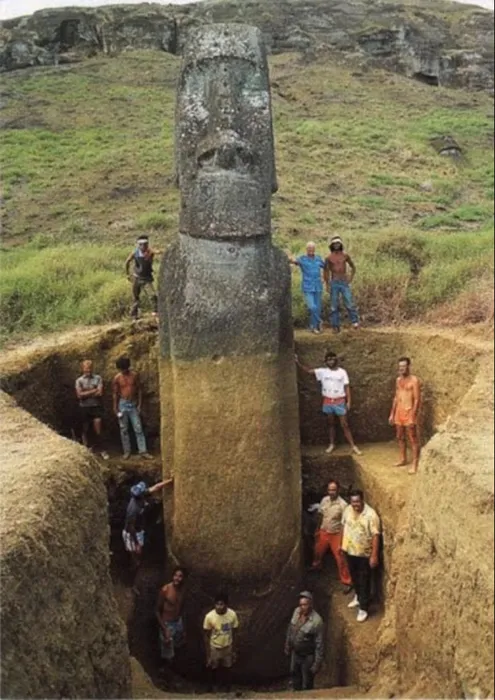Did you know that the iconic Easter Island heads actually have hidden bodies buried beneath the earth? The funny image circulating with two of these famous statues sitting with their bodies and folded arms underground is not as far from reality as one might think.

According to Van Tilburg, a researcher at the Cotsen Institute of Archaeology at the University of California, Los Angeles, people often mistake these statues as only heads because there are about 150 statues buried up to the shoulders on the slope of a volcano, and these are the most famous and most photographed of all the Easter Island statues. This misconception arises from the fact that people haven’t seen photos of other unearthed statues on the island.

To shed light on the true nature of these statues, a team of archaeologists at UCLA developed the Easter Island Statue Project. They excavated several statues to reveal the underlying torsos and bodies. Over time, these statues had been covered by successive mass transport deposits on the island, burying their lower parts and gradually eroding through natural weathering processes.

Nearly 1,000 statues on the small Pacific Island have been documented and studied as part of this project, spanning nine years. The team uncovered etched petroglyphs on the backs of the figures, commonly crescent-shaped to represent Polynesian canoes, likely symbols of the carvers’ families.

Additionally, abundant red pigment found at human burial sites near the statues suggests that the statues were painted red, likely during ceremonies. These burial sites often surround the statues, indicating that the Rapa Nui people buried their dead alongside their family’s statue.

The process of carving these statues was no small feat. One statue that was carved but never erected would have stood 72 feet tall, weighing more than two Boeing 737 airplanes!
The Easter Island statues continue to captivate researchers and enthusiasts, offering insights into the history, culture, and artistic prowess of the Rapa Nui people. As archaeological discoveries unfold, we gain a deeper understanding of these iconic symbols from the cradle of human civilization.

